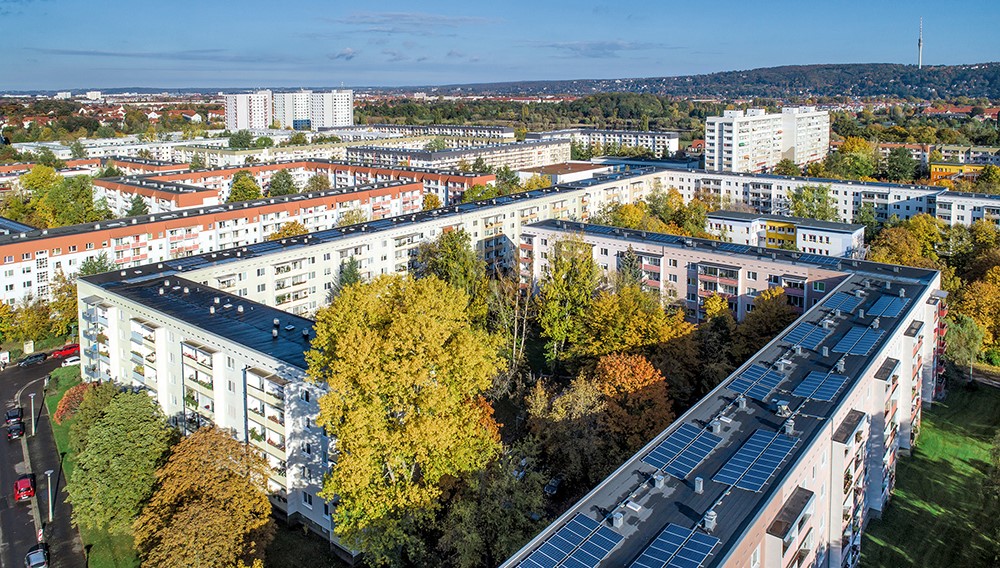Austria
The Austrian economy reported strong growth in 2021, with GDP expected to increase by 4.1%, although renewed official restrictions to contain the coronavirus pandemic, ongoing supply bottlenecks and high commodity prices put a damper on the recovery towards the end of the year. At the beginning of 2022, the negative effects of the fourth wave of the coronavirus on tourism, coupled with global supply bottlenecks, remain the factors dominating the Austrian economy. Once these aspects have been resolved, the economy will mount a rapid recovery and grow by 5.2% in 2022, according to calculations by the Austrian Institute of Economic Research (WIFO).
Bolstered by international industrial activity and government subsidy measures, gross fixed capital formation expanded by a considerable 6.4% in 2021 according to the Institute for Advanced Studies (IHS), mainly due to the expansion in equipment (7.3%) and construction (5.5%). Exports benefited from the marked global economic recovery, and domestic export markets presumably expanded by nearly 9% in 2021. The uptick in domestic demand and strong export activity mean that import demand is expected to have increased by 10.4% in 2021. Private consumption increased considerably again last year, growing by an estimated 3.2%, although the renewed measures imposed to contain the high infection rates dealt a blow.
The momentum for further economic development will come primarily from private consumer spending supported by catch-up effects, the positive employment trend and the declining savings rate. This means that the sectors that were affected by official restrictions in 2021 – especially the retail sector and the hotel and food service industries – will experience strong growth, as will other consumer-related services. Once the supply problems have been resolved, investment activity will recover; supported by the ongoing favorable financing conditions, this will provide an impetus for the Austrian economy, especially in 2023. After two years of negative growth contributions, Bank Austria expects foreign trade to make a positive contribution again starting in 2022, particularly through the export of services once the tourism sector has revived.
The economic recovery triggered a rapid improvement in the labor market, with the unemployment rate falling by 1.8 percentage points to an average of 8.1% in 2021. Unemployment in construction, industry and non-market services is already even lower than it was before the outbreak of the pandemic. The WIFO expects the unemployment rate to drop further to 7.2% in 2022.
Inflation picked up considerable speed in 2021 driven by energy prices and global supply bottlenecks, with HICP inflation expected to come in at 2.7%. According to the forecast released by the Austrian central bank (OeNB), the transfer of higher wholesale gas and electricity prices to end consumers, the introduction of the CO₂ tax beginning July 1, and price increases for raw materials other than energy will lead to an additional increase in inflation to 3.2% in 2022.
In addition to international economic risks such as new waves of infection, prolonged disruption to global supply chains, higher inflation expectations or a blow to China’s economic activity due to a property crisis, domestic risks are also largely related to the pandemic.
The 2021 real estate year in Austria was characterized by intense investment pressure and high demand for apartments, single-family homes and land. As a result, the trend towards a significant increase in property prices continued. The values of the current OeNB residential real estate price index on the basis of new and used condominiums and single-family residences show an increase in Austria in the third quarter of 2021 of 10.4% compared to the previous year. Compared to the first quarter of 2021, however, the price momentum weakened somewhat in the second and third quarters. In Vienna, prices increased by 10.2% compared to the prior-year quarter. In the rest of Austria, price developments came to 10.6% during the same period. The deviation of the trend for residential real estate prices from the development of the factors included in the OeNB’s fundamental price indicator has accelerated further, suggesting that the residential real estate market is increasingly overheating. According to the consumer price index published by the Austrian statistical office, Statistik Austria, apartment rents in Austria rose by 2.0% year-on-year in 2021, albeit with a dip as the year progressed after increases at the start of the year.
Experts from the real estate service provider RE/MAX expect to see a fundamentally positive real estate year across the country in 2022. The demand for housing is likely to grow at a faster rate than the supply. Ultimately, both the purchase prices for residential properties and new rents agreed for apartments that are not subject to rent restrictions are likely to increase, the former considerably so and the latter at a rate that is slower than the rate of inflation. According to the real estate service provider EHL, a number of new trends are emerging on the residential property market for 2022. The rental sector, for example, is seeing a return to greater demand for apartments with three or four rooms, not least because the coronavirus crisis, with the trend towards working from home and homeschooling, is pushing tenants to look for at least one extra room. Particular emphasis is, however, being placed on efficient layouts in order to achieve this in the smallest possible space. With rising demand and scarce supply, prices for townhouses and apartment complexes in Austria are also likely to rise in 2022, according to RE/MAX.
Austria’s population is growing and the positive trend is expected to continue. The latest population forecast produced by Statistik Austria, suggests that by 2040, the Austrian population will have risen by an estimated 6%, from 8.9 million (2020) to around 9.5 million. The expected population growth is due exclusively to high positive net migration. Bank Austria reports that residential construction activity in Austria has largely addressed the marked increase in the demand for homes in recent years. After a new construction record was set back in 2019 with 78,000 apartments completed, construction activity cooled down somewhat in 2020 (around 73,000 apartments) and is expected to have matched the prior-year level or increased slightly in 2021. Although the OeNB estimates that there was cumulative excess supply of just under 40,000 residential units in 2021, there is still a shortage of housing in some regions or market segments. According to Bank Austria, the gaps are likely to be found primarily in the sector comprising low-cost rental apartments in metropolitan areas. The construction industry is currently confronted with supply bottlenecks and marked increases in the prices of building materials, accompanied by a significant increase in construction prices and construction costs.
According to EHL, residential properties worth € 4.55 billion were traded on the Austrian transaction market in 2021, representing a year-on-year increase of 30%. In terms of transaction volume, residential properties were the preferred asset class with a share of approx. 35%. The experts from EHL expect to see a very active start to the first quarter of 2022.



